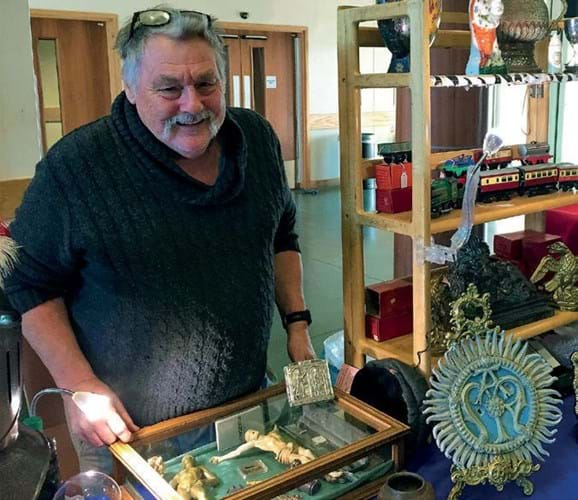Each object – furniture, paintings, ceramics, glassware and silver – had individual labels giving details of the piece and the price.
So far, so normal. However, down in the right-hand corner, on each and every label, were the words ‘firm price’.
Do we think this practice will become more common among dealers in shops, probably fed up with buyers’ attempts to negotiate prices down?
I’d be disappointed if it did.
Name and address supplied
ATG replies: We have seen the ‘NT’ mark (‘no trade’, ie no discount) occasionally on dealer object labels, though not ‘firm price’. We canvassed dealers at recent fairs:
The psychology of it
Sandy Jenner and Rebecca Fownes, formerly Portobello dealers, at Continuity Fairs’ Epsom Racecourse fair: “It depends who you’re selling to. A lot of our business is to other dealers and you can’t not give a dealer a discount. You wait a long time for privates to buy and if you don’t give a reduction to dealers, they won’t buy it on principle. It’s the psychology of it.”
Expectation of leeway

Ashley Gray.
Ashley Gray, Gray MCA, at The Decorative Antiques & Textiles Fair, Battersea: “As independent dealers we all have to have our own disciplines around pricing. Having said that, you would normally have some wriggle room.
“My concern would be in the current market, particularly in a fair, you would be undermining your business if you were not flexible on price. Everyone who comes to these events expects there to be a little leeway. It’s the way we’ve done business for ever. When you have that engagement with a buyer, then it’s the conversation about the deal and that’s half the fun.
“Our business would be become very dull if that was absent.”
Clear pricing
Gavin Morgan, of Morgan Strickland, at The Decorative Antiques & Textiles Fair, Battersea: “I would be very happy to have clear, transparent pricing – to indicate to buyers that’s my price and that’s it. And it would do the trade no harm.
“So, I respect what that dealer is doing but whether it will be successful or not, who knows? I’m not brave enough to try it!
"Private buyers like to feel they’re getting a deal and I know the threshold below which I can’t go.”
Price dependent
Helen Linfield, Wakelin & Linfield, at The Decorative Antiques & Textiles Fair: “I don’t doubt that dealer is ‘firm pricing’ in response to the TV shows, which have encouraged the general public to think we acquire these objects for nothing. We’ve had to search for them, pay for them, sometimes restore them.
“It depends on your market and the value of the piece. If the object is under £500, and the margin is £30, then I understand the dealer putting ‘firm price’. If I have a plate for £200, I can’t knock anything off. But on a table for £5000, I could probably give 10%.
“But I would never label our items ‘firm price’ – it’s too off-putting to buyers.”
Know your customer
Christopher Webb, at Continuity Fairs’ Epsom Racecourse fair: “I understand why the dealer might have done that, but you need to be flexible. Most trade people ask for a discount and you get to know the ones who want to kill you on price, and you factor that in.
“But when I’m doing the buying, and think something is under-valued, I regard that as a firm price and won’t quibble.”
Interviews by Noelle McElhatton
















